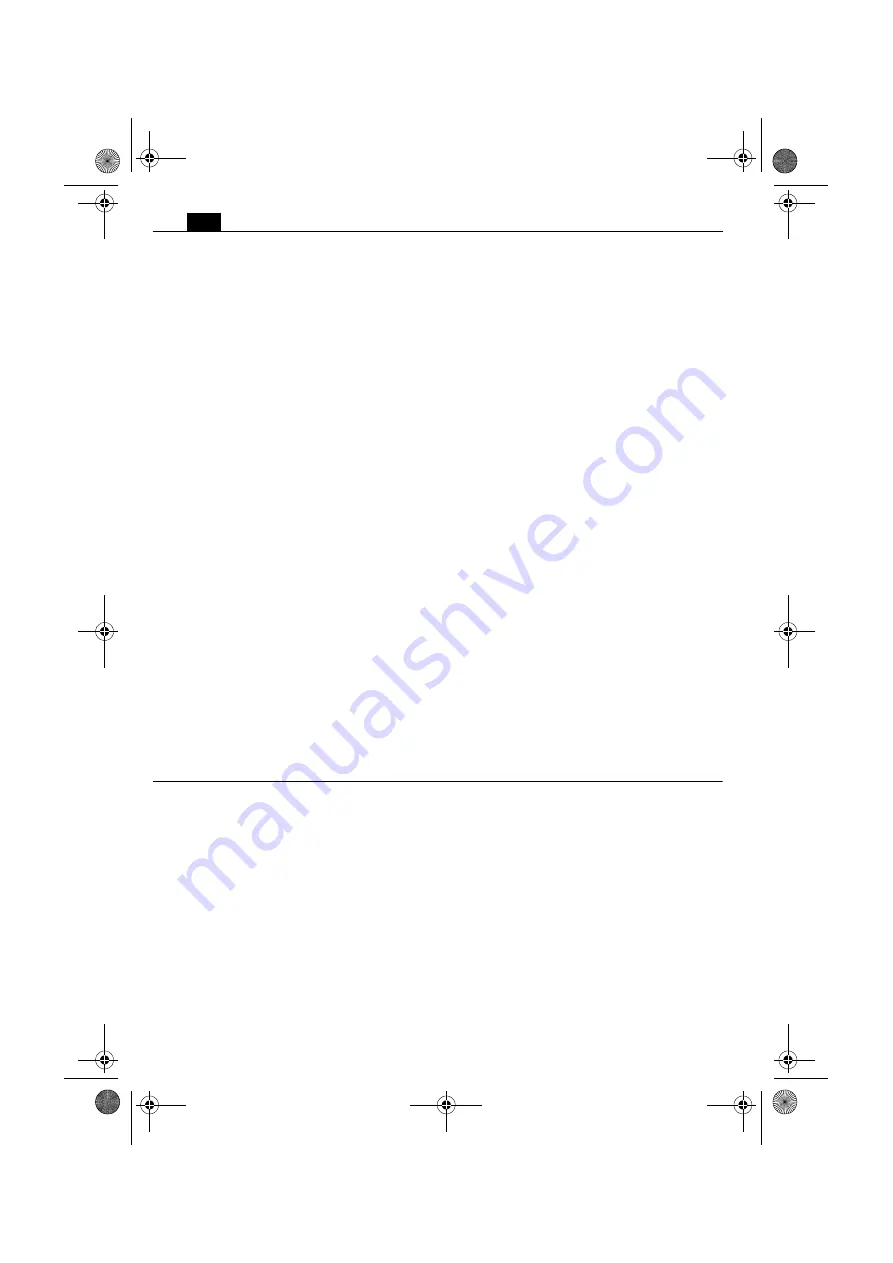
4
en
e) Do not overreach. Keep proper footing
and balance at all times.
This enables
better control of the power tool in
unexpected situations.
f) Dress properly. Do not wear loose cloth-
ing or jewelery. Keep your hair, clothing
and gloves away from moving parts.
Loose clothes, jewelry or long hair can
be caught in moving parts.
g) If devices are provided for the connec-
tion of dust extraction and collection
facilities, ensure these are connected
and properly used.
Use of dust collec-
tion can reduce dust-related hazards.
4) Power tool use and care
a) Do not force the power tool. Use the cor-
rect power tool for your application.
The
correct power tool will do the job bet-
ter and safer at the rate for which it was
designed.
b) Do not use the power tool if the switch
does not turn it on and off.
Any power
tool that cannot be controlled with the
switch is dangerous and must be
repaired.
c) Disconnect the plug from the power
source and/or the battery pack from the
power tool before making any adjust-
ments, changing accessories, or storing
power tools.
Such preventive safety
measures reduce the risk of starting the
power tool accidentally.
d) Store idle power tools out of the reach of
children and do not allow persons unfa-
miliar with the power tool or these
instructions to operate the power tool.
Power tools are dangerous in the hands
of untrained users.
e) Maintain power tools. Check for mis-
alignment or binding of moving parts,
breakage of parts and any other condi-
tion that may affect the power tool’s
operation. If damaged, have the power
tool repaired before use.
Many accidents
are caused by poorly maintained power
tools.
f) Keep cutting tools sharp and clean.
Properly maintained cutting tools with
sharp cutting edges are less likely to
bind and are easier to control.
g) Use the power tool, accessories and tool
bits etc. in accordance with these
instructions, taking into account the
working conditions and the work to be
performed.
Use of the power tool for
operations different from those
intended could result in a hazardous sit-
uation.
5) Service
a) Have your power tool serviced by a qual-
ified repair person using only identical
replacement parts.
This will ensure that
the safety of the power tool is main-
tained.
Special safety instructions.
Use auxiliary handles provided with the
machine.
Loss of control can lead to injury.
Wear personal protective equipment. Depend-
ing on application, use face shield, safety
goggles or safety glasses. Where appropriate,
wear dust mask, hearing protectors, gloves
and workshop apron capable of stopping
small abrasive or workpiece fragments.
The
safety glasses must be capable of protecting
against flying particles generated by the vari-
ous operations. Prolonged exposure to high
intensity noise may cause loss of hearing.
Secure the work piece firmly.
A work piece
that is gripped tightly in a clamping device or
vice, is more secure than if held by hand.
Do not rivet or screw any name-plates or
signs onto the power tool.
If the insulation is
damaged, protection against an electric shock
will be ineffective. Adhesive labels are recom-
mended.
Do not use accessories which are not specifi-
cally designed and recommended by the
power tool manufacturer.
Safe operation is
not ensured merely because an accessory fits
your power tool.
Clean the ventilation openings on the power
tool at regular intervals using non-metal
tools.
The blower of the motor draws dust
into the housing. An excessive accumulation
of metallic dust can cause an electrical hazard.
OBJ_BUCH-0000000109-001.book Page 4 Friday, June 7, 2013 10:26 AM




















